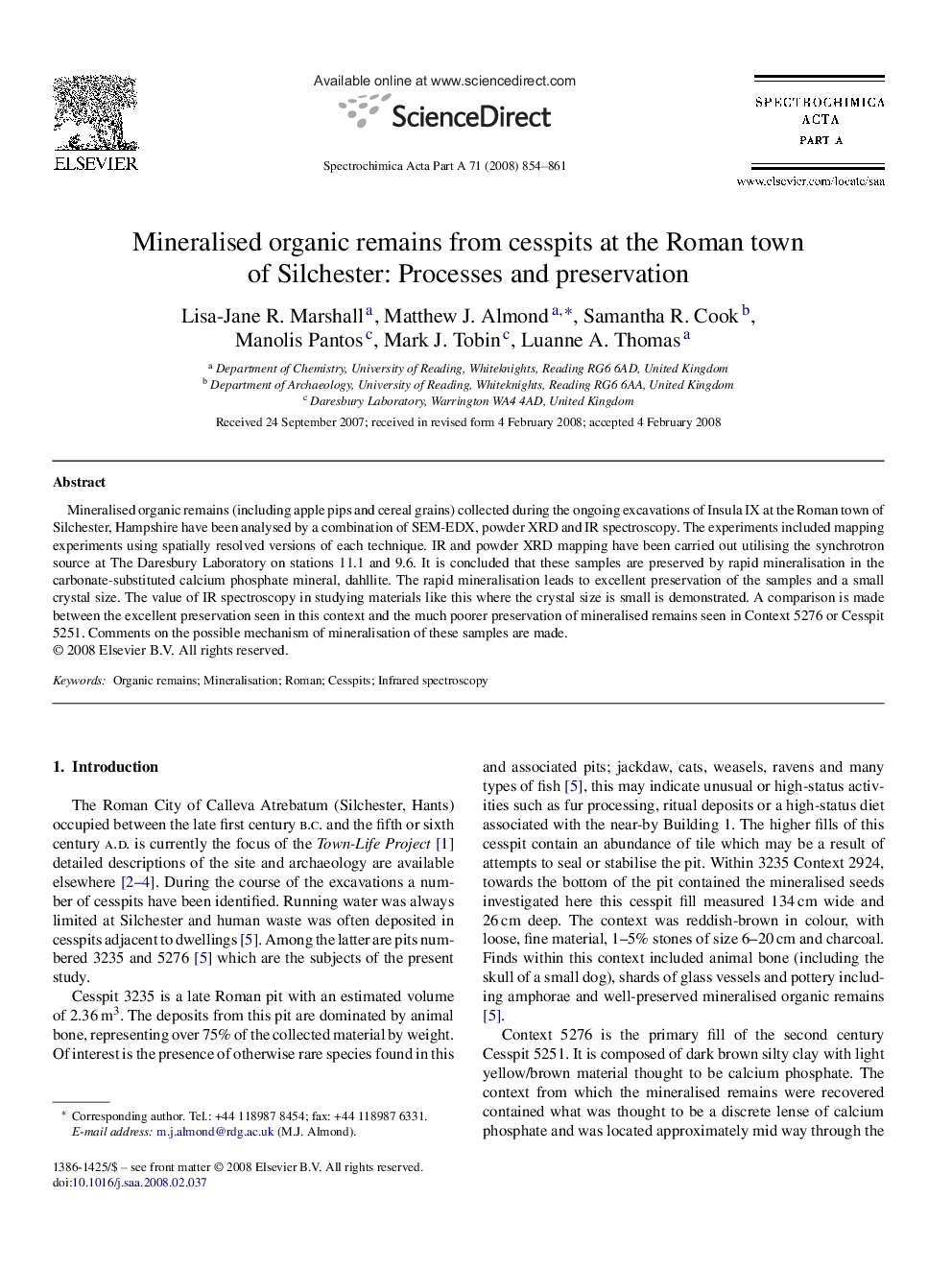| Article ID | Journal | Published Year | Pages | File Type |
|---|---|---|---|---|
| 1237409 | Spectrochimica Acta Part A: Molecular and Biomolecular Spectroscopy | 2008 | 8 Pages |
Mineralised organic remains (including apple pips and cereal grains) collected during the ongoing excavations of Insula IX at the Roman town of Silchester, Hampshire have been analysed by a combination of SEM-EDX, powder XRD and IR spectroscopy. The experiments included mapping experiments using spatially resolved versions of each technique. IR and powder XRD mapping have been carried out utilising the synchrotron source at The Daresbury Laboratory on stations 11.1 and 9.6. It is concluded that these samples are preserved by rapid mineralisation in the carbonate-substituted calcium phosphate mineral, dahllite. The rapid mineralisation leads to excellent preservation of the samples and a small crystal size. The value of IR spectroscopy in studying materials like this where the crystal size is small is demonstrated. A comparison is made between the excellent preservation seen in this context and the much poorer preservation of mineralised remains seen in Context 5276 or Cesspit 5251. Comments on the possible mechanism of mineralisation of these samples are made.
